easy cut fruit and veggie design videos
Eat Organic
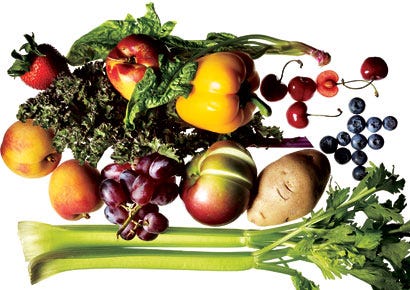
Scan any supermarket produce section and what do you see? Rows of brightly hued, blemish-free fruits and vegetables. They're gorgeous. But plants, like people, have natural imperfections—and some require more help than others to look good, not to mention maintain their youthful looks as they age.
Get a printable copy of our Organic Fruits and Veggies Shopping Guide.
In the plant world, the equivalent of beauty products are the dozens of chemicals that farmers use to fend off insects, pests, weeds, fungal attacks, and rot. Not surprisingly, plants that are more vulnerable to attack need more of them. To help you tell which is which (and, therefore, which are best to eat organic, as opposed to those you can buy conventionally to save money), the Environmental Working Group publishes two lists—the Dirty Dozen and the Clean 15. The EWG rankings are based on USDA-tested levels of chemical residues that remain on conventionally raised fruits and vegetables after washing. Revised lists came out in spring 2010, with a couple of surprising new additions.
Read on to discover the 12 fruits and veggies best bought organic—and 15 that are safe to eat conventionally grown.

8 minutes in the morning to a flat belly. Pick up your copy today!
Buy Organic: Celery

Why it's dirty: Due to peak consumer demand around Thanksgiving and Christmas, 75% of the crop is grown during the fall and winter, when rain and wind promote the growth of bacteria and fungal diseases. And because we eat the entire stalk, it must be sprayed repeatedly to ward off pests. "Nobody likes to find a caterpillar-damaged stalk in their celery bunch," says Stuart Reitz, PhD, a research entomologist with the USDA.
Buy Organic: Peaches
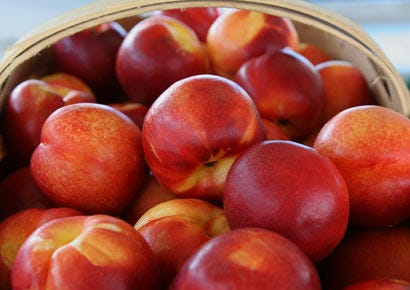
Why they're dirty: Sweet and succulent, peaches can be just as alluring to insects as to people. Farmers may spray peaches every week or two from bloom to harvest—and peach fuzz can trap pesticides, says peach breeder John R. Clark, PhD, a horticulturalist at the University of Arkansas, who peels every one of the thousands of peaches he eats each year.
Buy Organic: Strawberries
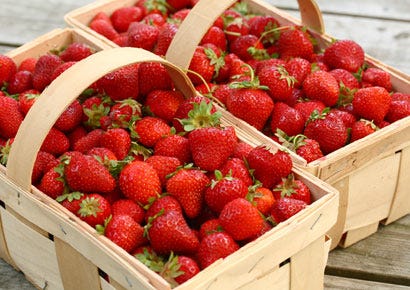
Why they're dirty: Strawberries are not only sweet and juicy but also delicate and prone to disease, including fungal attacks that can turn them to mush during transit and storage. "With apples and peaches, a lot of spraying is cosmetic to get blemish-free fruits," says Richard Wiles, senior vice president for policy at EWG. "With berries, you're just trying to get them across the finish line into the store before they go bad."
Buy Organic: Apples

Why they're dirty: Sweet-smelling and delicious, apples are susceptible to more than 30 insects and at least 10 diseases. And fungicides and other chemicals are added after picking to prevent tiny blemishes that can accumulate during storage of up to 9 months.
Buy Organic: Blueberries
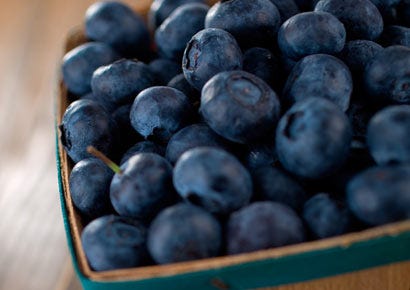
Why they're dirty: Blueberries are new on the Dirty Dozen list—possibly because the USDA began testing them only 3 years ago, after large increases in production. The berries are targets for insects such as blueberry maggots and bagworms.
Buy Organic: Nectarines
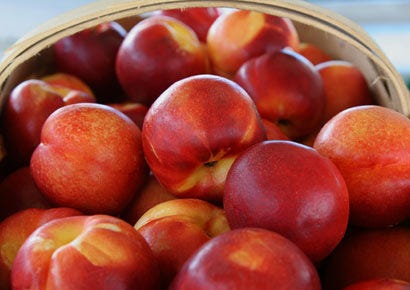
Why they're dirty: Nectarines differ from peaches only in the absence of fuzz—a trait that likely arose as a natural mutation of a peach tree—so it's no wonder they're susceptible to many of the same pests, including oriental fruit moths and peach twig borers. Thanks to their waxy skin, they don't retain as many pesticides as peaches. On the other hand, they are more vulnerable to rot and scarring.
Buy Organic: Bell Peppers
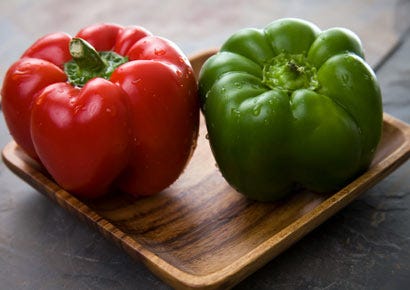
Why they're dirty: Unlike cruciferous vegetables such as broccoli, sweet bell peppers (which are technically fruits) have no bitter compounds to serve as built-in insect repellents. They even lack the fiery taste of their cousins, the chile peppers. And the creases at their crowns may provide nooks for pesticides to accumulate, says Philip Stansly, PhD, an entomologist at the University of Florida.
Buy Organic: Spinach
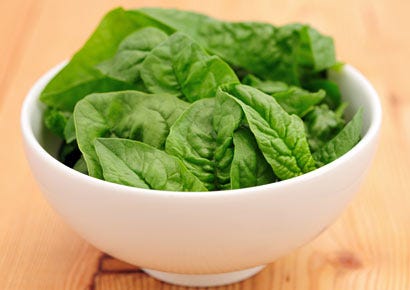
Why it's dirty: Spinach is a mere leaf that's crunched by a variety of insects, including grasshoppers. In addition, says Wiles, "spinach tends to pull persistent DDT residues out of the soil and into the leaf." These chemicals remain in the earth decades after they were banned.
Buy Organic: Kale
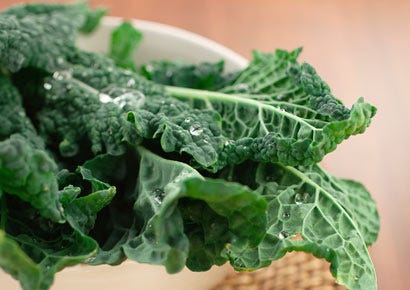
Why it's dirty: The outer leaves are not removed before sale, so any amount of damage will make it unmarketable. Even natural enemies of the pests that feed on kale can be considered contaminants in harvested produce, so farmers spray for all bugs, including the "good" ones.
Buy Organic: Cherries
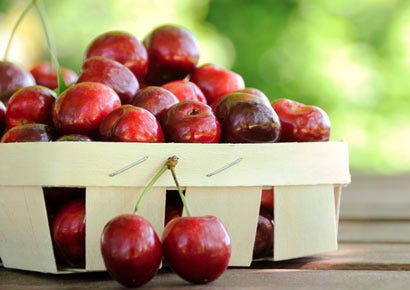
Why they're dirty: Because cherries are a naked fruit—without peel or protection—they're vulnerable to pests such as the western cherry fruit fly. If just one of its maggots is found in a shipment, the entire load of fruit must be dumped, according to quarantine regulations, so growers spray out of fear of losing their crops.
Buy Organic: Potatoes
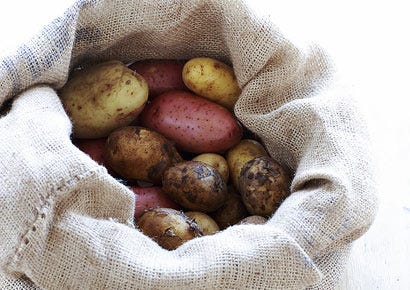
Why they're dirty: New to the list, America's number one vegetable is sprayed 5 or more times throughout the growing season to protect against various pests—and to ensure a crop of uniform shape and size for fast-food outlets and potato chip producers. After harvesting, another round of spraying occurs in the packing shed to ward off molds and sprouting.
Buy Organic: Imported Grapes
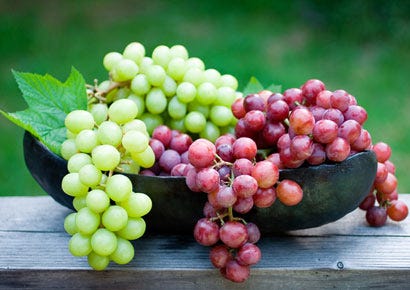
Why they're dirty: During their long transit from the southern hemisphere, imported grapes are susceptible to Botrytis cinerea rot, which causes the fruits to split and leak. To prevent that, farmers spray aggressively with fungicides. (Domestic table grapes do not need the same spraying because most are grown in the dry desert climate of Southern California, where botrytis does not thrive.)
Buy Conventional: Onions

Why they're clean: Onions manufacture their own protective chemicals, a series of unpleasant-tasting sulfur compounds that discourage insect munching. Though farmers may spray early in the growing season, residues are removed when the dry outer layer of the bulb is shed during harvest.
Buy Conventional: Avocado
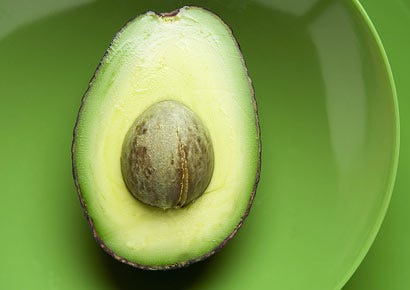
Why it's clean: Most of the pesticides that are used to treat avocados accumulate on the peel.
Buy Conventional: Sweet Corn
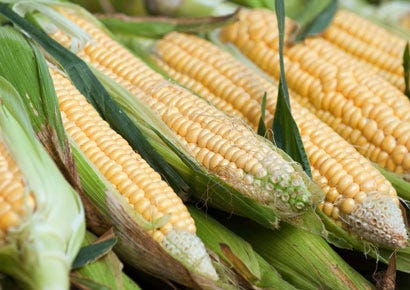
Why it's clean: Corn is husked before eating, eliminating residues on the outside.
Buy Conventional: Pineapple
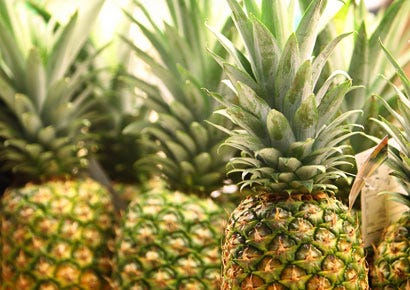
Why it's clean: Most spraying is done early in the growing season, so minimal residues remain after harvest. Those that do are removed with the thick rind.
Buy Conventional: Mangoes
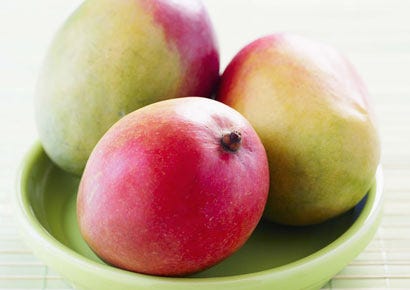
Why they're clean: Mangoes are grown in Mexico, the Caribbean, and South America, where the dry climate discourages fungus and hand weeding is a common alternative to herbicides. In addition—repeat after us—mangoes are peeled before eating.
Buy Conventional: Sweet Peas

Why they're clean: They are protected by their pods.
Buy Conventional: Asparagus

Why it's clean: The spears spring up so fast, there's little time for insects to attack.
Buy Conventional: Kiwifruit

Why it's clean: Lacewings and parasitic wasps help control the pests that like to feed on kiwis.
Buy Conventional: Cabbage
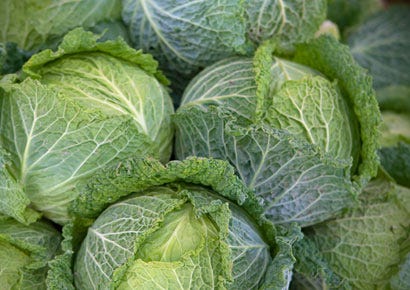
Why it's clean: The plant is sprayed, but the outer leaves that absorb pesticides are discarded before sale.
Healthy Cabbage Recipes
Buy Conventional: Eggplant
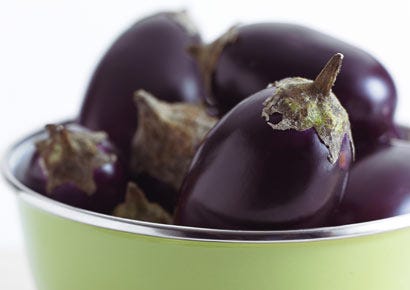
Why it's clean: The eggplant has a slick surface that sheds chemicals easily.
Buy Conventional: Cantaloupe
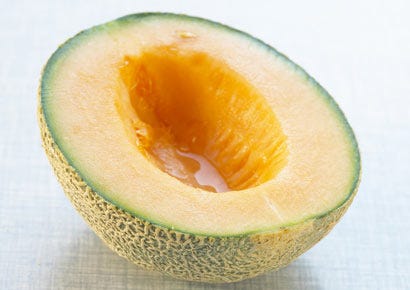
Why it's clean: Though the melons are sprayed with insecticides, we don't ingest them because the fruit is cut out of the thick rind before, well, you know.
Buy Conventional: Watermelon
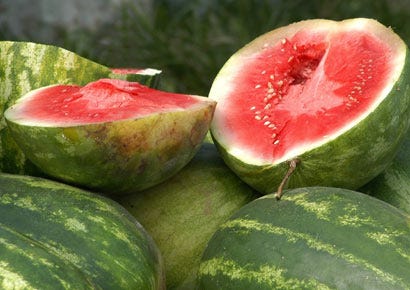
Why it's clean: The fruit has a thick protective rind that is not eaten.
Buy Conventional: Grapefruit
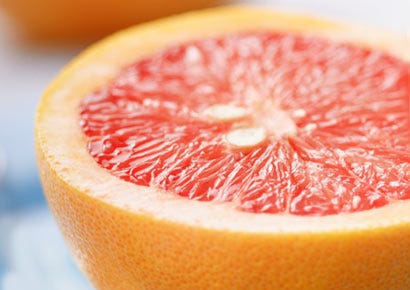
Why it's clean: Although farmers often use fungicides to control green mold, most of the residues remain on the peel.
Buy Conventional: Sweet Potato
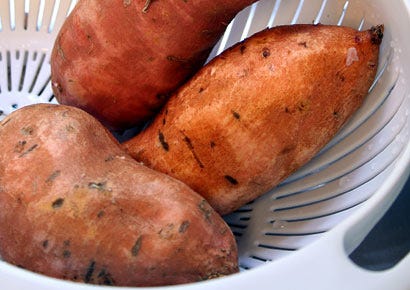
Why it's clean: The sweet potato has built-in defenses. If bitten, it oozes a milky-white sap that gums up insect mouthparts. Before they're sold, sweet potatoes are cured at warm temperatures and high humidity. This causes the skin to thicken, providing protection against damage and disease.
Buy Conventional: Honeydew Melon
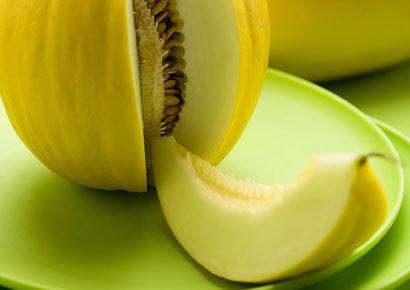
Why it's clean: Honeydew may be washed in diluted chlorine during packing in order to ward off rot-inducing microbes. But—need we say it again?—you discard the rind before eating. See, you're an expert already.
Just remember that whether you opt for conventional or organic, you're better off eating more fruits and vegetables rather than less. And whatever produce you buy, wash or peel it before eating.
More Tips for Healthier Eating
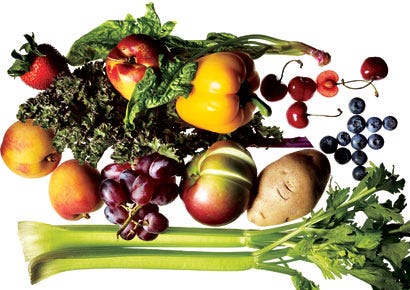
Dirtiest and Cleanest Fruits and Veggies ListNever forget the best and worst again! Get our printable list for your next shopping trip
- Power Up Produce
Get the most nutrients from your fruits and veggies with these eating and cooking tips
Find out what's worth the cost, what's not, and other ways to save
This content is created and maintained by a third party, and imported onto this page to help users provide their email addresses. You may be able to find more information about this and similar content at piano.io
easy cut fruit and veggie design videos
Source: https://www.prevention.com/food-nutrition/healthy-eating/a20479297/fruits-and-veggies-to-buy-organic/
Posted by: lowewincert.blogspot.com

0 Response to "easy cut fruit and veggie design videos"
Post a Comment